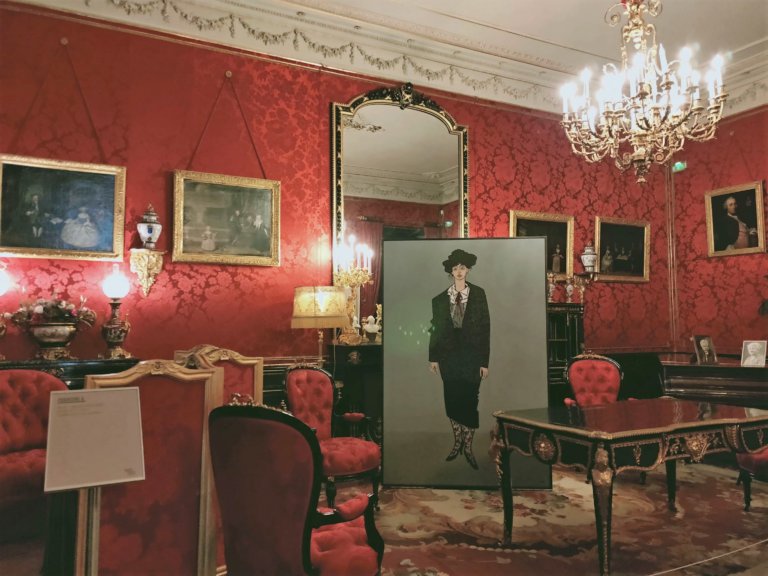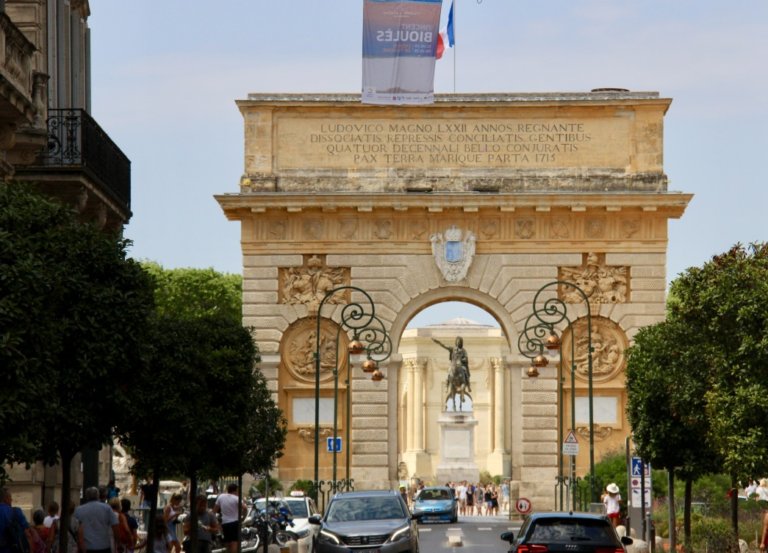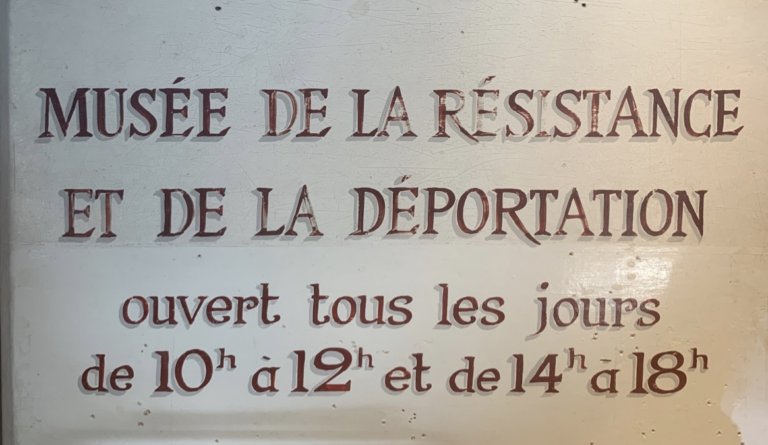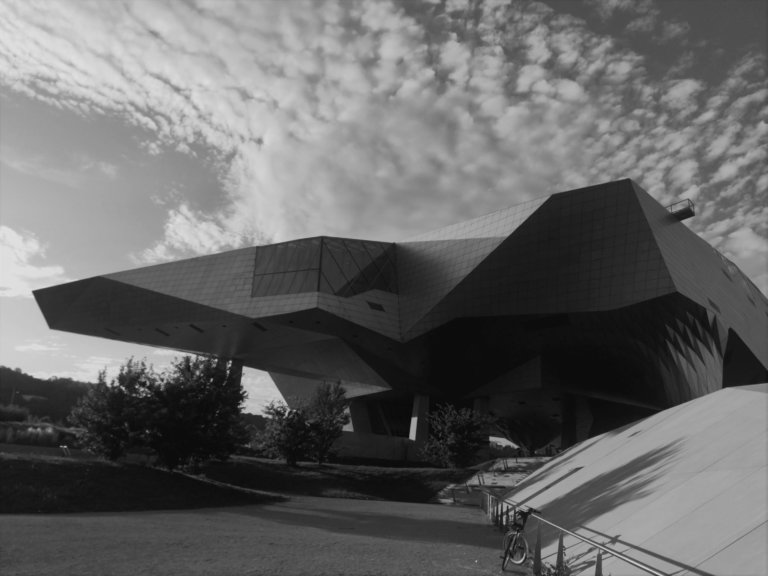Croix Rousse Silk Workers Lyon. Day 121. August 27th 2016
Silk. A glamourous fabric that continues to have a rich and luxurious reputation. This lead to a vision in my mind of the silk weavers in Lyon: surrounded by luxuriant thread, sought after for their skill, a glamourous life weaving this luxury fabric for the world.
The reality was far from my imagination. As often is the way of the world when I resource is valued – there was greed, exploitation, work pride, uprisings. We set out to explore this history for a day through the streets of Lyon.

Carrying the large audioguide phone from OnlyLyon, (the tourist office) and a laminated map of directions, we set off.
First stop – the wrong stop. I read the instructions to get to the starting point but missed the last sentence. Twenty minutes later we emerged on top of a hill, a long way from Lyon, at the end of the line. Chris quick to discover that as usual, my map reading was incomplete. Yes, we were to get this line – only for 2 stops from our starting point.
Back we went, arriving at the city hall to start the tour we thought coffee and croissant would set us up nicely for our walk. Sitting with the first tour sites nearby, drink coffee, listen to the audio. It took most of coffee time for me to get my audio to work. Eventually, after multiple reboots, I wacked it on my hand and off it went working perfectly the rest of the day.

The early part of the tour leads us up the hill of Croix Rousse – up steep streets the silk workers once walked daily to and from work. Through tiny winding streets now filled with street art and small design shops.
A tradition from the times of silk workers working long hours and working hard that continues still in some Bouchons is mâchon – a hearty breakfast of pork in red wine. No, we did not try it. Nor did we get to eat in one of the many Bouchons.
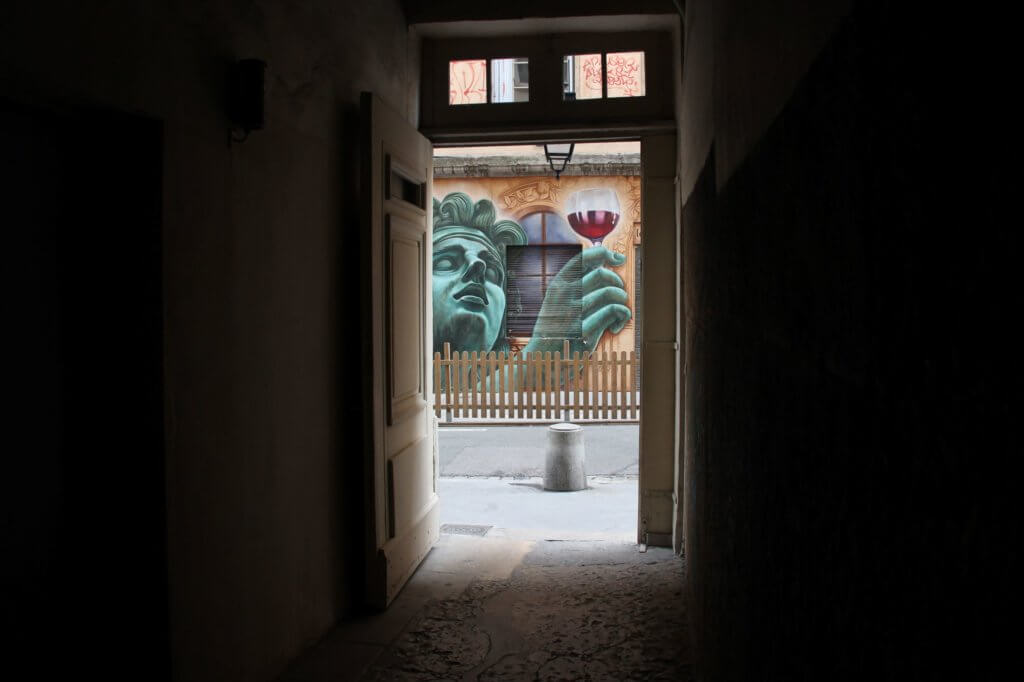
In addition to the silk weavers, the other fascination for today was the Traboules – narrow passageways leading through buildings from street to street. Originally used to enable the silk workers to transport silk to the marketplaces. Used over time by locals for many reasons including during the second world war the Traboules were used by the Resistance working against Nazi occupation.
A now famous staircase of the Traboule system is “Cour des Voraces” entered from a narrow door off the street you suddenly find yourself facing a huge concrete structure. As we arrived a silent performance was taking place drawing attention to the structure of the staircase.

Maison des Canuts – a small museum containing a history of the silk industry, equipment once used in silk production, and information about key people and the Canuts – the silk weavers and their fervent work towards better conditions. And at the exit a very tempting gift shop filled with luscious silk delights. The house contains information on development of Jacquard including the looms contained within high ceilinged rooms.

In 1801 Joseph-Marie Jacquard invented mechanised looms with a series of cards punched with holes corresponding to the pattern. This mechanised way of creating the pattern had previously been done by children.
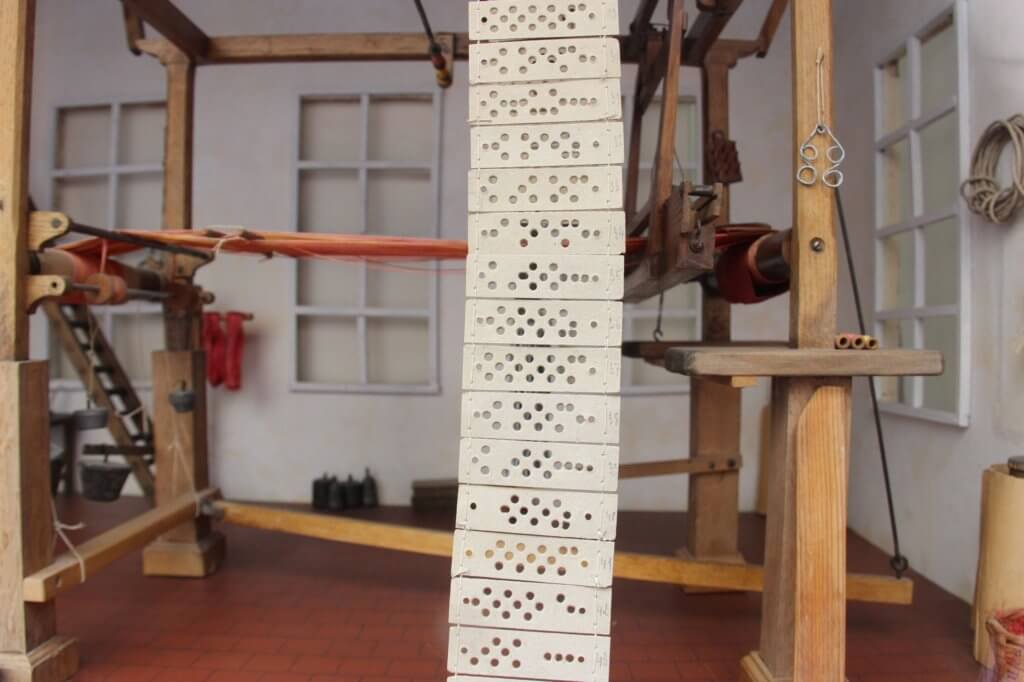
The museum also provided the background to, and outcome of the revolts of 1831 and 1834. The evolution of the Canut Revolts. The birth of the workers cry “live free working or die fighting”.
A fuller explanation can be found in the following sites:
Marxist.com The Lyon Silk Workers Uprising of 1831 and 1835
Atlas Obscura Le Mur des Canuts
Weaving gold or silver thread with the silk had its own technique, equipment and monitoring. Including protections and weighing devices to prevent theft,

Along the tour path old Lyon intersected with the modern:
Street art throughout the city some for fun, some art of beauty and some art with a message.

A large building with a mural appearing as though people were on the balconies of the multi-storeyed building. Paintings of people who have contributed to the life and development of Lyon and of the world


